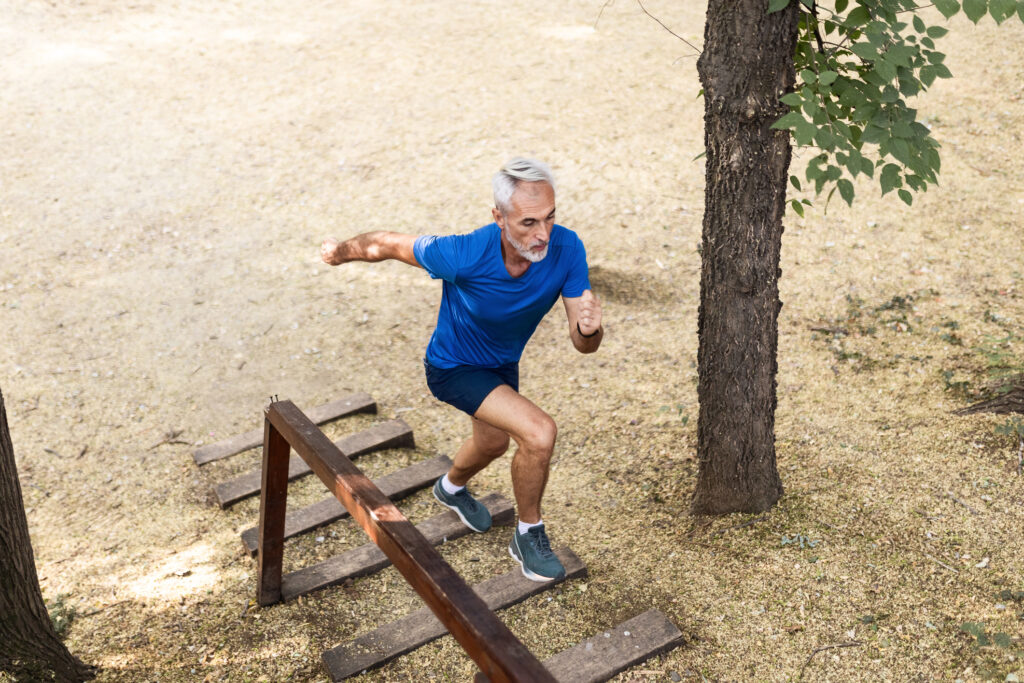Ask Dr. Marily Oppezzo about the benefits of being strong, and her response is quick, concise and convincing.
“I believe it’s one of the most important investments we can make in our future,” said the Stanford University exercise interventionist and behavioral and learning scientist. Strength training “is the single most important thing that you can do to maintain lifelong independence.”
There’s a reason the scholar, who is also a dietitian and head of the nutrition pillar for Stanford Lifestyle Medicine, has that conviction. Power is speed. Speed helps prevent falls. And falls pose a significant threat to living independently as you age.
More than 25% of people older than 65 fall every year, according to the Centers for Disease Control and Prevention. Only half of them will tell their doctors, the agency reports. Falls lead to fractures, and falls are the most common reason for brain injuries, the CDC found.
Depending on the severity of broken bones or brain injuries, an older person whose mobility has been compromised by either might experience challenges living independently or being unable to do so. Additionally, an older person who has fallen is twice as likely to fall again, according to the CDC.
“If you keep your muscles, which we start to lose at age 30, and maintain those muscles, you will be able to continue to use them, and use them on your own,” Oppezzo said. “I think they can prevent falls because you can pick your feet up.”
The National Council on Aging lists a weak lower body and challenges with balance as contributors to increased fall risk. Similarly, numerous senior care and in-home health agencies warn against shuffling gaits in older people, echoing Oppezzo’s message about maintaining the ability to lift feet and walk normally.
Staving Off The “Penias”
Oppezzo encourages strength training to activate muscles and prevent or mitigate several common conditions that often occur with age. “When your muscles activate, they pull on your bone,” she explained. “That’s going to make your bones more dense.”

And avoiding thin bones is crucial in staving off one of three “penias” that jeopardize independent living.
“There’s osteopenia, which is the loss of bone density. There’s sarcopenia, which is the loss of muscle strength and function,” Oppezzo said, “and then there’s powerpenia, which is the loss of power, which is speed – the speed to catch yourself before you fall.”
“In middle age and beyond, a component of strength training that we want to incorporate is speed,” she recommended. “Anything where you have to train your muscles to react fast. You want to be faster than gravity. If you don’t use those speed muscles, you lose them. So I think strength training and something with speed, with reactivity,” are beneficial, she added.
“I have my mom doing slow training for her muscles. It’s very slow training, so she feels safe,” Oppezzo said. “But she does fast training in her jazzercise. And it’s just like you’re making sure you can pick your feet up and move them really quickly.”
Reaction Routines
Oppezzo, who has designed and led clinical trials to decrease workplace sedentary behavior, provided some ideas about activities that could increase speed and reactivity. Her suggestions and Health & Wellness’ publication of them do not constitute medical advice and should not be construed as such.
Individuals seeking to incorporate activities into their fitness or strength routines should always consult with their physician before initiating a new exercise regimen. The following exercises from Oppezzo could be a starting point for that discussion.
You’ll notice that Oppezzo’s ideas address increasing lower-body strength and balance, two issues that the National Council on Aging cites as contributing to falls. Oppezzo said she thinks that individuals should develop and maintain speed and reactivity routines during middle age and continue the practice. “The thing is to start now,” Oppezzo advises. “Why not? Because then you have the added benefit of all these years of training.”

And the starting now doesn’t need to be anything as Herculean as box jumps, she said. “Some great ‘power’ training is anything with speed,” that’s done safely, Oppezzo said. Examples include:
- Tapping a point in front of you or tapping a step and switching legs
- Jumping. Ropeless jump ropes are an option for people who don’t want to stop each time an actual rope hits their legs. Alternatively, don’t jump, but quickly move up and down
- Walking or running up stairs as fast as possible, while remembering to do so safely
- Sit and stand from a chair as fast as possible
- Break the dishes – not literally. It’s the name Oppezzo gives to the exercise that involves throwing imaginary dishes to the ground, catching them yourself in a perfect squat, then tossing them to the ceiling from that squatting position by quickly rising to your tiptoes or jumping squatting out of the crouched position
- Jumping onto a surface with two feet and landing safely with bent knees to absorb the landing safely
- Walking quickly with high knees, or jogging in place at a fast pace for 20 seconds, then walking in place slowly for 10 seconds
Fall Prevention Resources
If you are an older person concerned about falling, or if you are concerned about the balance, strength and power of an older person in your life, the National Council on Aging leads a national program that can help address your concerns.
The Falls Free Initiative lists resources by state that provide information on available fall prevention programs and the state’s action plans on the health issue.
In addition to your healthcare provider, community centers, senior centers and state aging departments will have information on local programs that address fall prevention.
If power training has not been a part of your lifestyle, Oppezzo said it’s not too late. “You’re never too old to make changes to be fit,” she said. “Muscles can get stronger until the day we die.”


